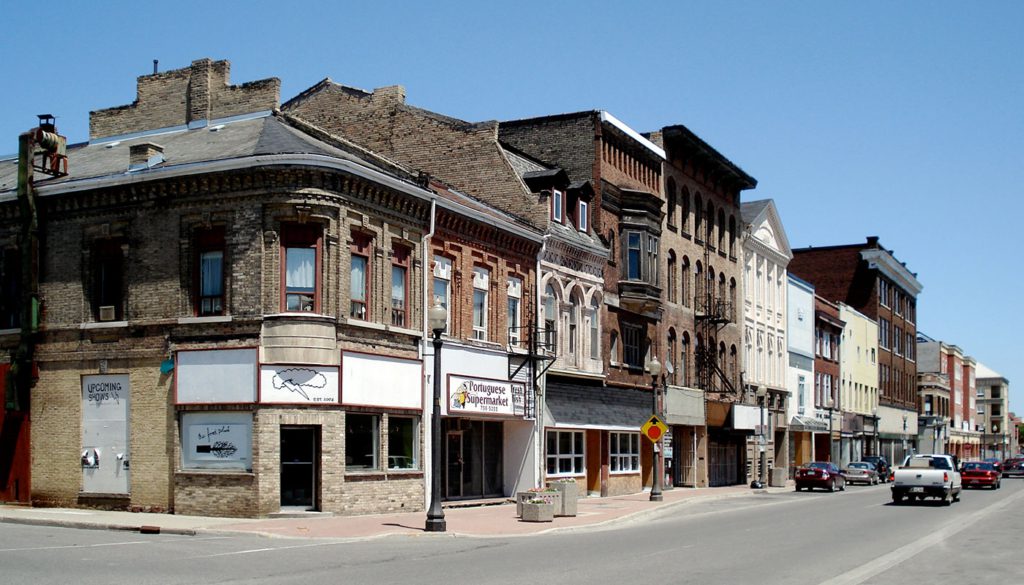Brantford, Ontario
Brantford (2021 population: 104,688) is a city in Ontario, Canada, founded on the Grand River in Southwestern Ontario. It is surrounded by Brant County, but is politically separate with a municipal government of its own that is fully independent of the county's municipal government.

Brantford is sometimes known as the “Telephone City”, as a former city resident, Alexander Graham Bell invented the telephone at his father’s home, the Bell Homestead, and conducted the first long distance telephone call from Brantford to Paris, Ontario in 1876.
Brantford is also the birthplace of hockey player Wayne Gretzky, comedian Phil Hartman, as well as Group of Seven member Lawren Harris. Brantford is named after Joseph Brant, a Mohawk leader. Many of his descendants live on the neighbouring reserve of Six Nations of the Grand River First Nation.
The Attawandaron, or Neutral Nation, lived in the Grand River valley area before the 17th century; their main village and seat of the chief, Kandoucho, was identified by 19th-century historians as having been located on the Grand River where Brantford lies today. This town, like the rest of their settlements, was destroyed when the Iroquois declared war in 1650 and exterminated the Neutral nation.
In 1784, Captain Joseph Brant and the Six Nations Indians left New York State for Canada. As a reward for their loyalty to the British Crown, they were given a large land grant, referred to as the Haldimand Tract, on the Grand River.
The original Mohawk settlement was on the south edge of the present-day city at a location favourable for landing canoes.
Brant’s crossing of the river gave the original name to the area: Brant’s ford. By 1847, European settlers began to settle further up the river at a ford in the Grand River and named the village Brantford. The Mohawk Chapel, part of the original Mohawk settlement, is Ontario’s oldest Protestant church. Brantford was incorporated as a city in 1877.
The history of the Brantford region from 1793 to 1920 is described at length in the book At The Forks of The Grand.
Numerous works address the stories of former residents of Native American boarding schools in Western New York and Canada, such as Thomas Indian School, Mohawk Institute Residential School (also known as Mohawk Manual Labour School and Mush Hole Indian Residential School) in Brantford, Southern Ontario, Haudenosaunee boarding school, and the Carlisle Indian Industrial School in Carlisle, Pennsylvania; the impact of those and similar schools on their communities; and community efforts to overcome those impacts. Examples include: the film Unseen Tears: A Documentary on Boarding School Survivors, Ronald James Douglas’ graduate thesis titled Documenting ethnic cleansing in North America: Creating Unseen Tears, and the Legacy of Hope Foundation’s online media collection: “Where are the Children? Healing the Legacy of the Residential Schools”.
Brantford’s cultural resources include an array of performing, literary, and visual arts organizations, multicultural groups, libraries, a large performance venue, galleries and museums, and an extensive number of independent artists and craftspeople. Brantford’s Municipal Cultural Plan is to be updated in 2014.
Local museums include the Bell Homestead, Brant Museum and Archives, Canadian Military Heritage Museum and the Personal Computer Museum.
